The US Navy gave me a solid foundation in leadership and operational excellence. But translating that into the business world requires a few more things.

This is a blog version of a talk I gave in Cambridge UK on Wednesday November 20, 2024. SoCode hosted a meetup for local Engineering leaders and I was honored to be asked to speak.
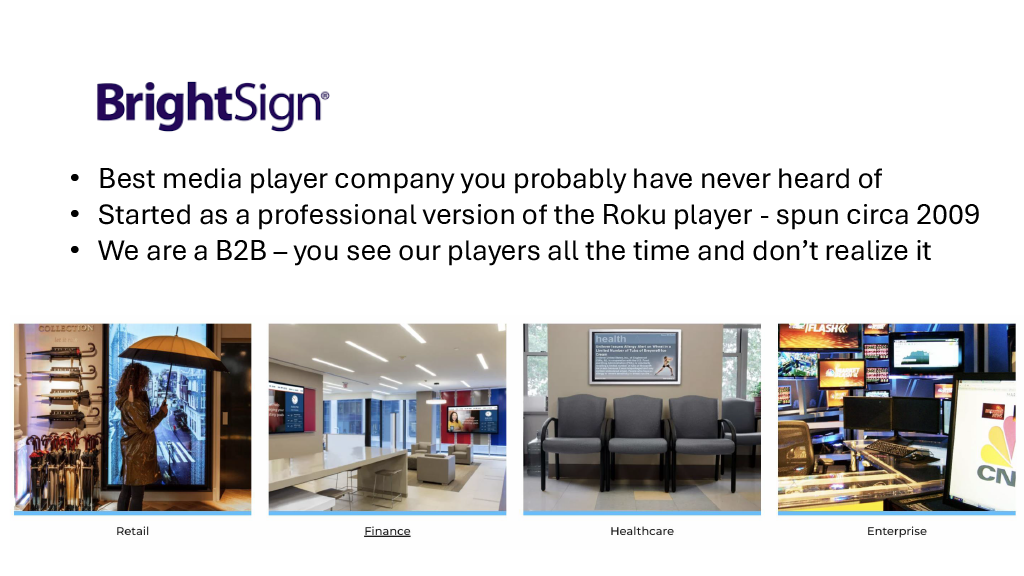
I am the VP of Software Engineering at BrightSign. My current responsibilities include our SaaS platform BSN.cloud, our desktop authoring software BrightAuthor:connected, and all of our Quality Engineering efforts.
BrightSign is probably the best media player company that you have never heard of. We spun out of Roku circa 2009. You see our players in action all over the place, including at most TV walls in major retailers, and as part of retail kiosks for Bose, Sonos, GoPro, etc. We have players in many airports and train stations for both arrival and departure board applications as well as advertising. We are also in many museums where our easy to use interactivity makes it simple to create rich media experiences.
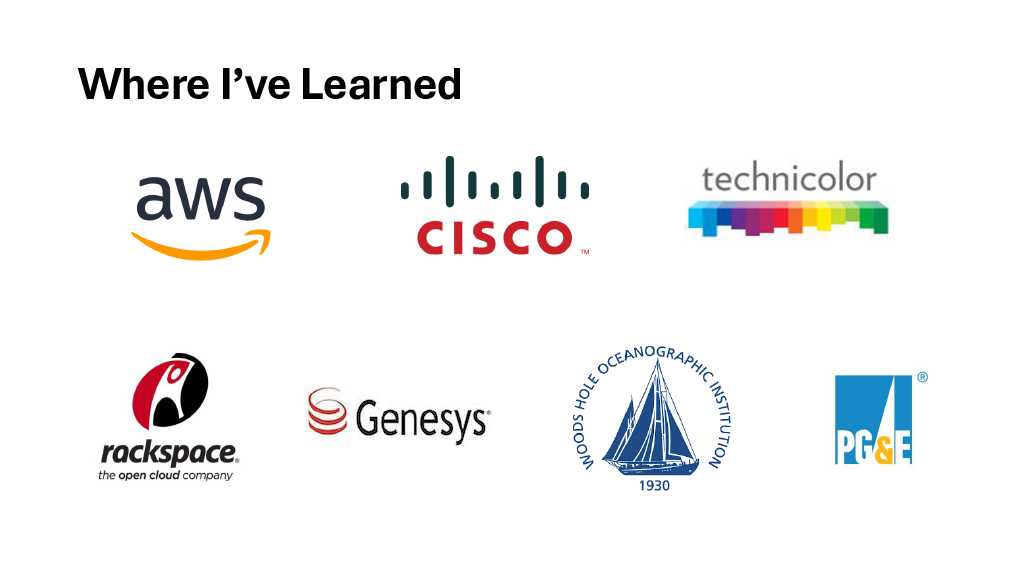
I’ve had the opportunity to work and learn at some really fine companies. Most of my experience has been around software that uses a high degree of networking, audio and video, cloud, and embedded systems. I even got to work for Woods Hole Oceanographic Institution with the folks who found the Titanic.
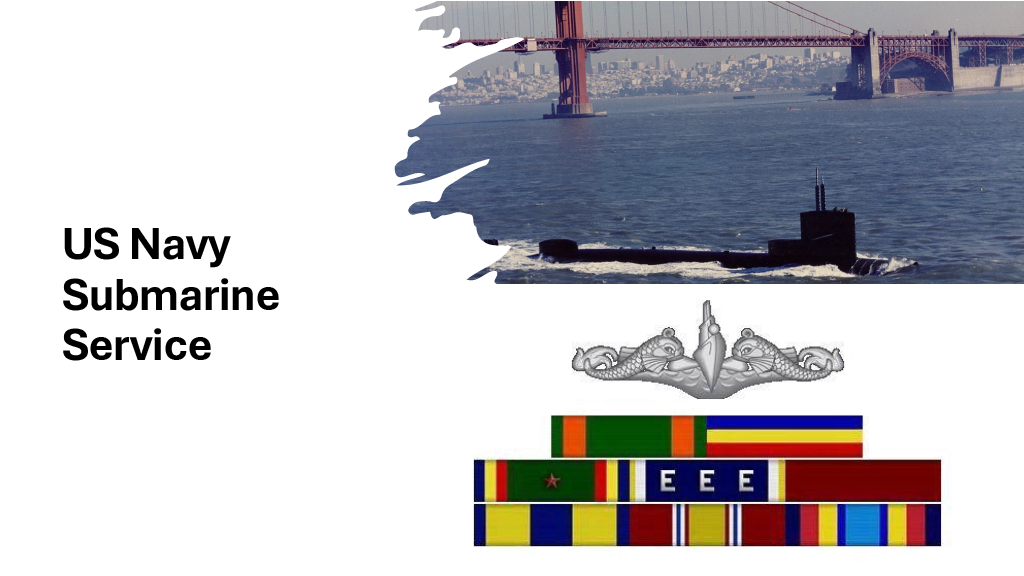
But my core leadership and Engineering foundations were set from my service in the US Navy Submarine Force. I served on the USS Richard B. Russell, SSN-687. During the Cold War my submarine was tasked with many classified missions. In that environment failure is not an option. Everyone on my submarine was selected because they were among the best in an already elite submarine force. That was a crucible of Engineering and Leadership that put me on course for my entire career.
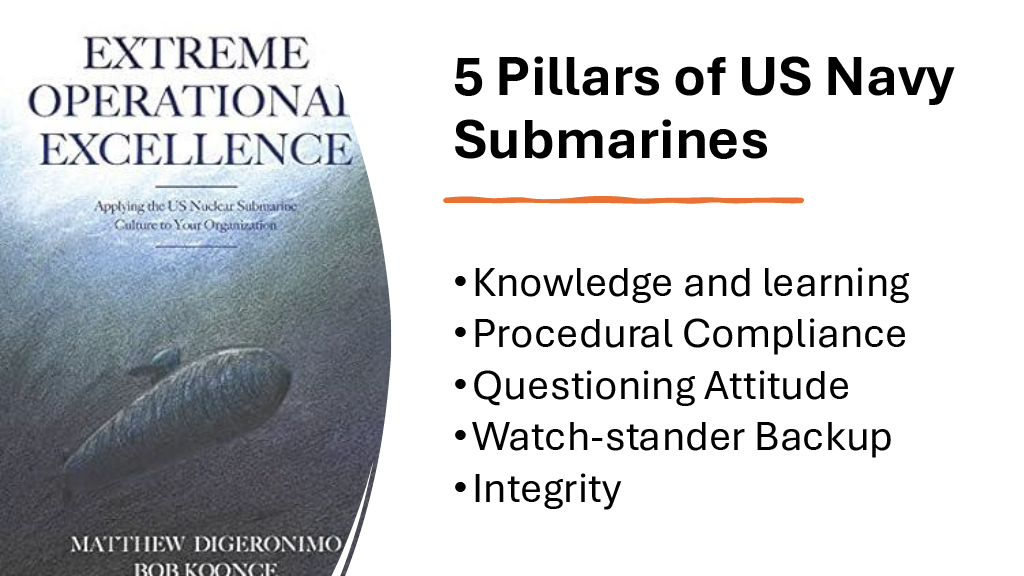
My management style was directly formed by my Navy experience, and I’ve tried to codify my beliefs in writing through this blog as well as documents at every company I’ve been at. But recently I found the book Extreme Operational Excellence written by two former US Navy Submarine Commanding Officers. This excellent book captures everything I was taught in one easy to read book. I cannot recommend it highly enough.
Seriously. Just go read this book. If you want to have a high-performance team, follow the guidance. But I don’t want to rehash that book here. You should just go read it.
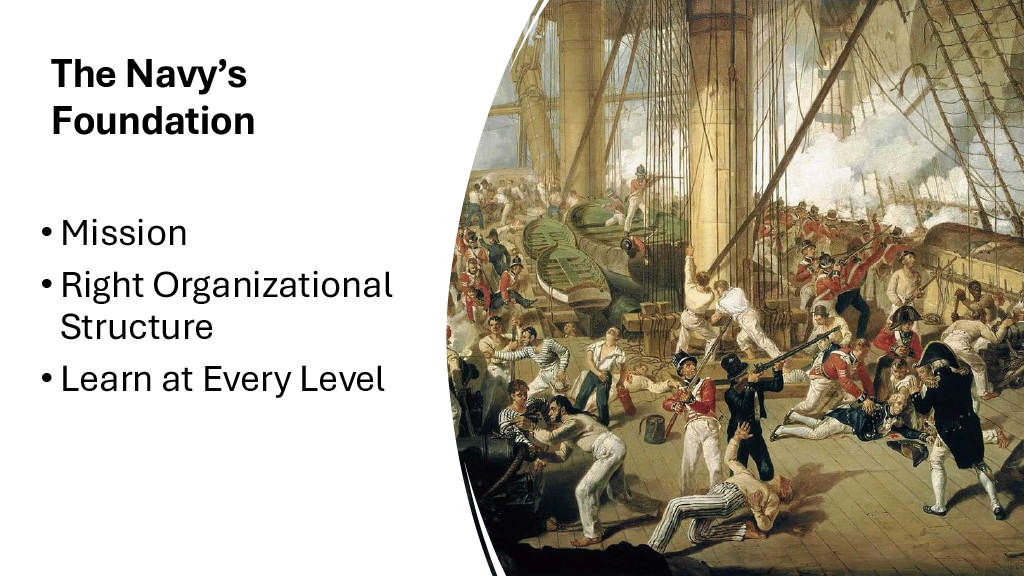
But just reading that book is not enough, especially if you are in a technology product development company. And especially if you are trying to scale that company.
You see, the Navy has some advantages. They have foundations whose roots go back to before the time of my hero, Lord Admiral Nelson. As an aside, he was an amazing leader. You won’t go far wrong reading about hims.
Specifically, the Navy has fully formed foundations around mission, organizational structure, and a rigorous system to ensure that leaders learn what they need to learn at every level of leadership.

To have a high-performance team everyone has to understand the mission. They also must believe the mission, and trust the leadership.
The mission of a submarine is easy to understand: don’t let the other guys hear you before you hear them. Don’t get blown up. If needed, blow up the other guy and then get away. That’s an amazingly easy mission to understand. And it’s very clear what every single person onboard needs to do in order to support the mission. In a company, that can be harder. It’s critical that leadership explain the mission to the entire company. What are our goals? Why are we doing things? How do we know we are doing well? This requires a constant effort at communications up and down the whole organization. Submarines have an even more important mission: don’t let the water come into the people tank. Even in peacetime, the ocean will exploit any weakness. At depth, you have to be focussed. Make the number of times you dive equal to the number of times you surface! And of course, do the sometimes very secret things you are tasked with. In a small company, what’s your mission?
But it also requires that the mission be believable. In industry, my personal rule is to never work at a company that makes a product I won’t buy with my own money. If I don’t want the product it’s going to be hard to be believable to my team. At BrightSign I totally believe in the product: when I was at PRN years ago I bought many thousands of BrightSign players for a major deployment. I still think we have the best solution on the market. That’s easy for me to convey.
Trust. That’s the other side of believable. The team has to trust the leadership. Nothing takes the wind out of a team’s sails like not trusting the leaders. If they don’t trust you then you will never have a high performing team. Period.
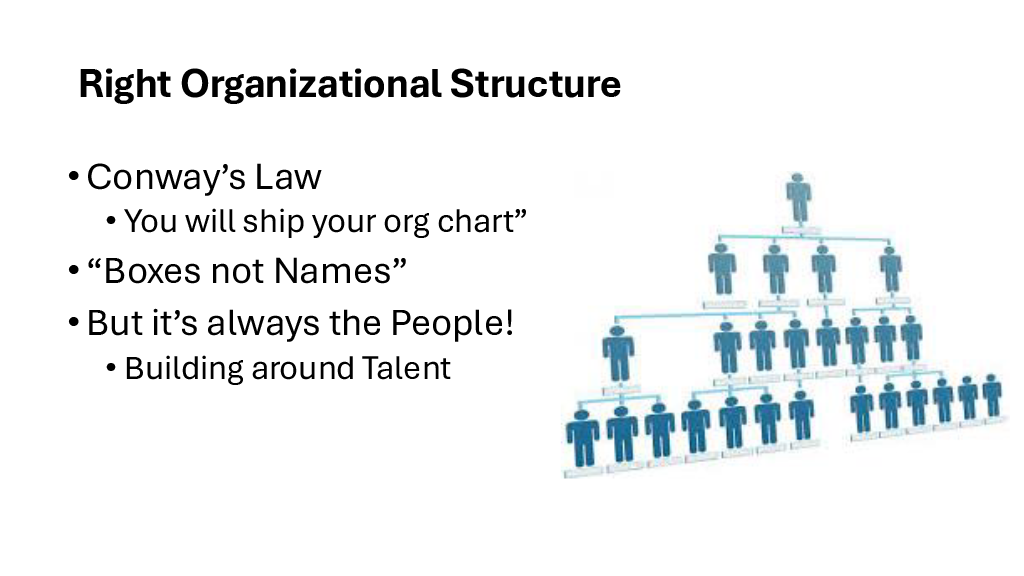
The Navy has an enormous advantage of having solved their optimum organization structure. A ship has a number of divisions. Several divisions form a department. There are several departments that form the crew. Every division has an officer (manager) and every division has a higher-ranking officer (department head). The crew has an XO and a CO (like a VP and a President, kinda). The enlisted crew have a structure of subject matter experts who are leaders (Chiefs) and a time-proven hierarchy of workers. Every ship follows that. You scale up to a fleet by adding another layer of management (Admirals). This organizational structure has been field proven over hundreds of years.
Companies have to design their organizational structure. There are some common structures, sure. But especially when the company is smaller the structure is a lot less rigid. If nothing else, there just are not enough employees to organize perfectly. Folks are working across disciplines, wearing many hats. There’s no playbook developed over hundreds of years.
The ideal of org structure planning is to write a chart of boxes that are roles and don’t put any names in them. Don’t think about the staff you have, just think about the best way to organize around the work. Be acutely aware of Conway’s Law: you will ship your org chart. If you have a team that works on several parts of your product you are likely to see that neither part is fully baked. I could talk for hours about this, but there are plenty of books on this already. Just keep it in mind.
But… people. In small companies we always have people that are high performers. People you trust to tackle the hard problem, to not just give up. There’s often no time to manage the details, and your trusted right hand is who you turn to. That’s just how it is. That’s going to impact how you organize. You may find that your practical day to day operating organization does not match the org chart on paper as a result. If that’s the case, consider changing the on-paper formal chart to reflect the reality. Your team knows the real structure anyway.

The reality of smaller companies is that you need to staff them more like a professional sports team. You need the best talent you can afford, and you need to structure your game plan to take best advantage of the players you have. A former manager of mine once said that the ultimate goal of a larger company is to be able to fill every role with a mediocre talent. If you are a small or even medium-sized company you cannot compete unless you have the talent. One can argue that in high-growth, high tech companies that you can never accept just mediocre staff either.
The challenge you have to always consider is that you cannot scale with just superstars. Well, I suppose if you are the Yankees or Dodgers (I HATE the Dodgers) and have bottomless buckets of money you can try. But for the mere mortal companies, at some point you have to start using a smart org structure and rely less on the superstars. This is always going to be case by case. Just realize that you can’t just go hire another Alex Morgan/Barry Bonds/Joe Montana/whoever. You have to build a whole TEAM, and you have to organize them well. Otherwise you just can’t scale.
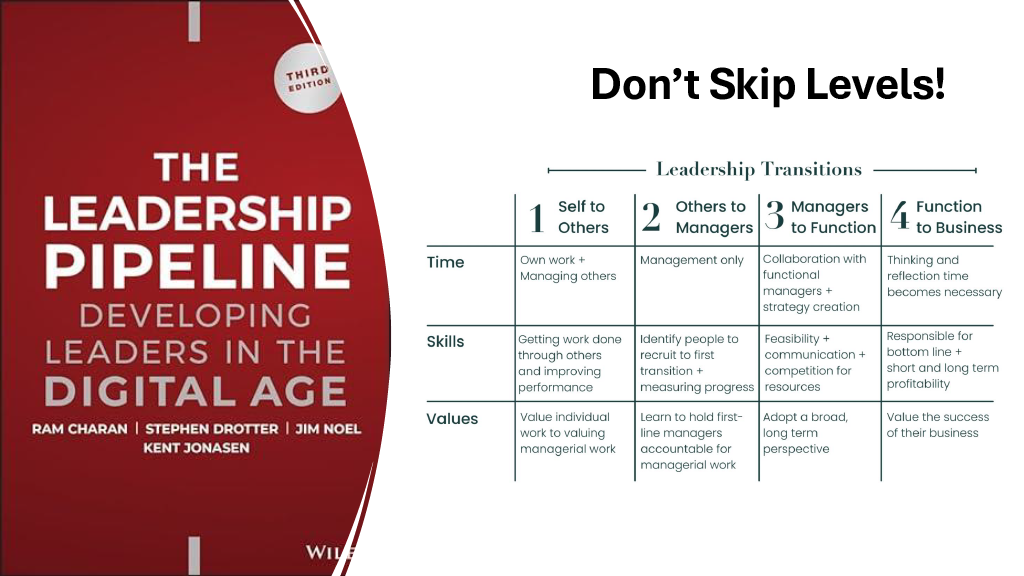
The Navy has an incredibly well structured (and rigid) promotion process. Officers on a submarine must be a division officer, then a department head. They must do each of the department head roles (Weapons, Navigation, Engineering, etc.). Then they must go special schools to learn to be an XO and then a CO. The Navy has created a formal structure for leadership. You can’t change it.
Companies don’t have that at all. It’s incredibly common for the trusted folks (see above) to be promoted several levels. In the Navy you would never promote a division officer to XO, skipping the experience of being a department head. But we see it all the time in small tech companies that a team lead is suddenly a VP of Engineering, or a co-founder coder is CTO.
If you want to scale your company cleanly, you need leaders who understand the job of all the levels below them. Not “read a book” understand, but “been there and done that” understand. Folks who skip levels rarely succeed. Please go read Leadership Pipeline. Learn what lessons are needed at each level. Then if you need to break the rules and skip a level you at least are aware of the gaps.
Management is a skill. It requires learning and practice. It’s incredibly common that Engineers don’t really understand that. There’s a lot of Dunning-Kruger Effect where folks just don’t know what they don’t know. I half joke that most Engineers are least somewhere along the autism spectrum - we often vastly prefer computers to people. In fact, it seems like many Engineers are just baffled by people, or assume that other people are just like them. People skills need to be developed. And unless you learn people skills AND how to manage, you will not do well at it. If you need to have folks skip a level (or worse, two) then I strongly suggest paying for a leadership coach. You can pay now, or pay a lot more later when the lack of management skill undercuts the foundation of your company.

If you don’t have a strong foundation and things get shaky then it can go terribly wrong. Whether that’s a business change, growing too fast, COVID, or a natural disaster, you rely on your foundation. This photo is of a house in my home city of San Francisco. Homes near this one with a stronger foundation didn’t have this level of damage.
But with planning and effort you don’t have to suffer. You can have a strong foundation and weather the storm.
And then if you use the principles in the books above you can scale and have a truly high-performance Engineering team.

Thank you to SoCode for asking me to speak at their meetup. I’ve used them for recruiting for the last several years. They are easily the best recruiters I’ve ever worked with. I can’t recommend them highly enough.